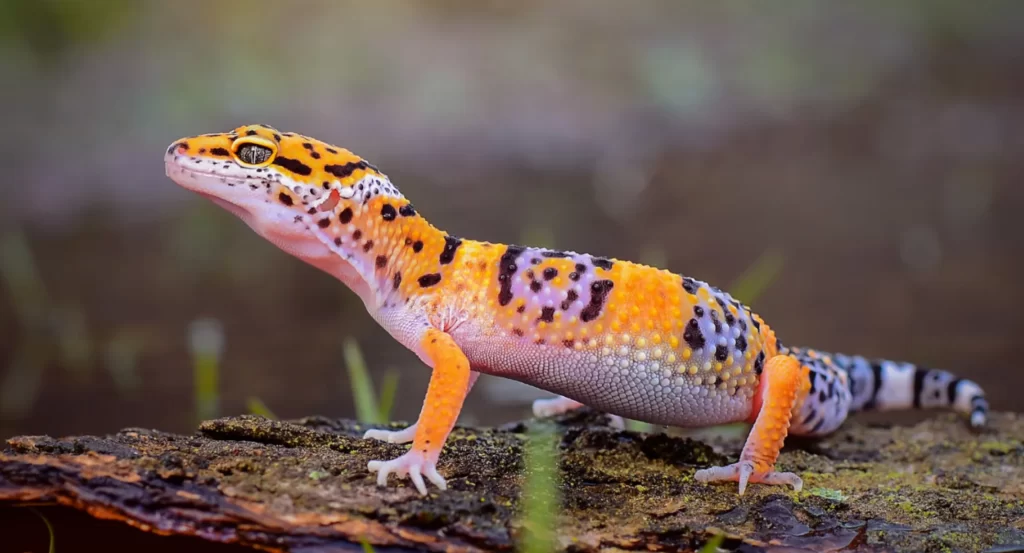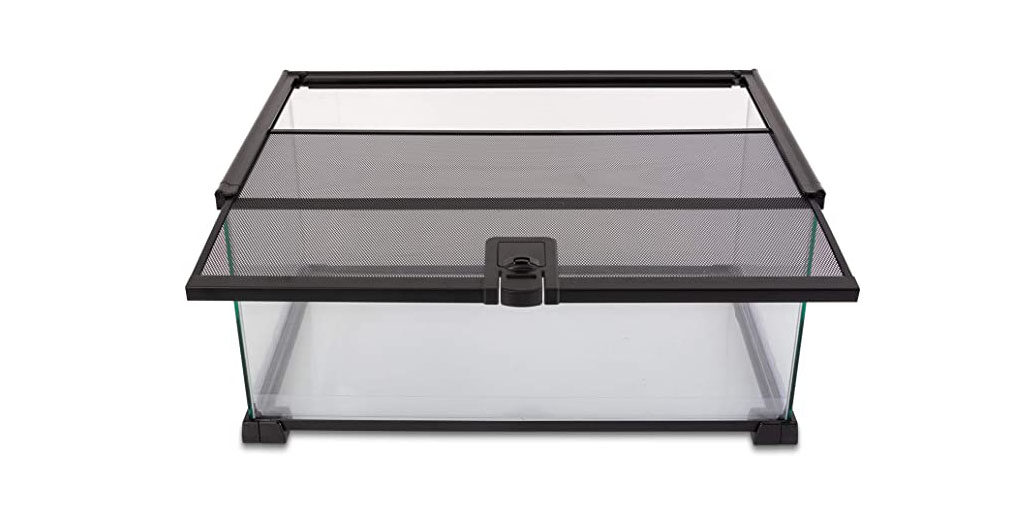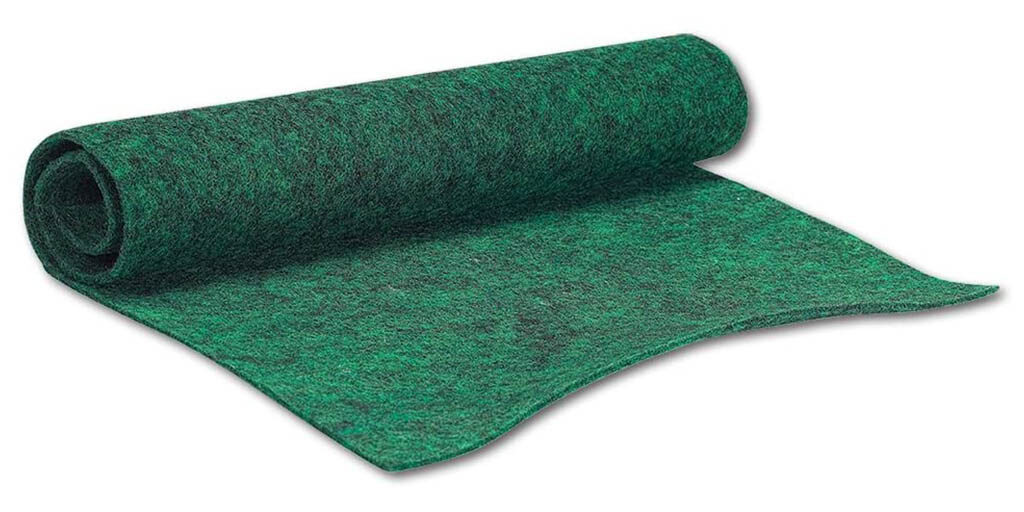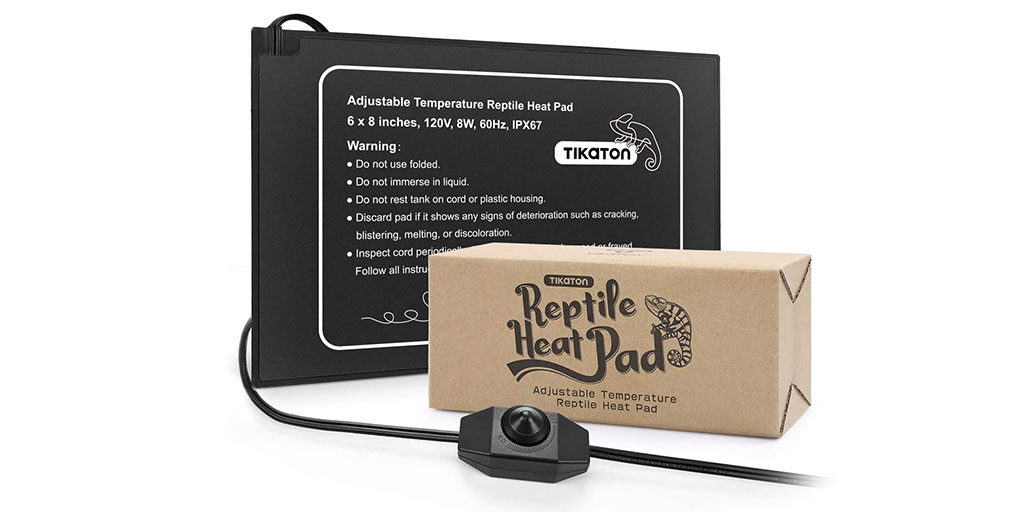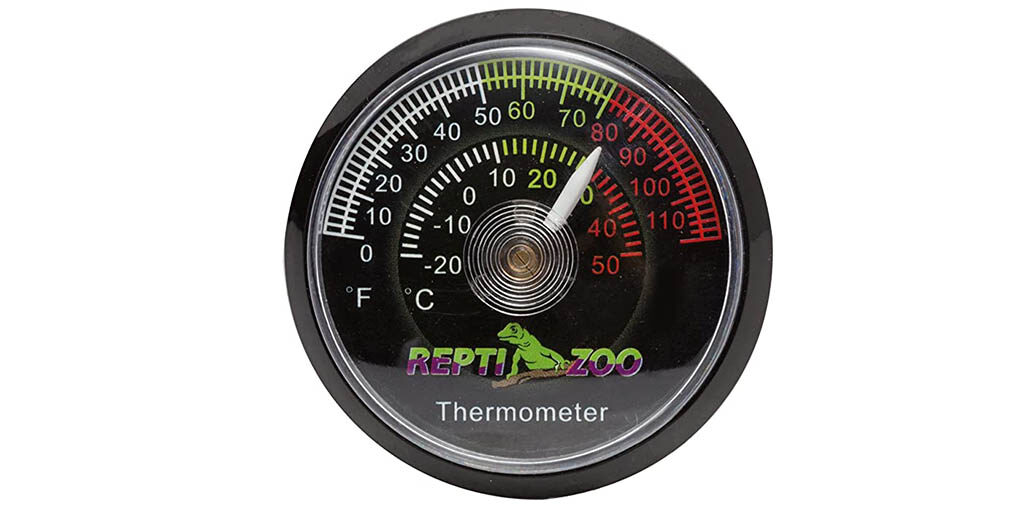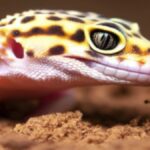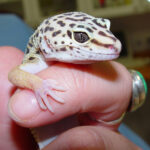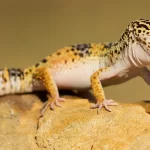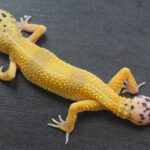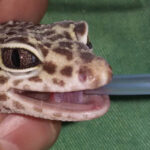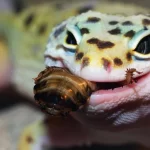Keeping Leopard geckos are relatively easy compared to some other lizards, like for example Bearded dragons. Here are our general Leopard gecko care guidelines.
Introduction to Leopard gecko care
Leopard geckos are crepuscular(50)(51)(59) to nocturnal(49)(69) and cathemeral lizards that are naturally from India, Pakistan, Afghanistan, Iraq, Iran and Nepal. Although these countries are mostly covered by deserts, they prefer niches closer to dry Savannah areas.
Leopard geckos spend most of their time hiding away and prefer to be active when they need to eat. When basic Leopard gecko care requirements are met, they are hardy and a pleasure to keep. They need little space, basic environmental furniture and substrates and are easy to feed.
Leopard geckos are often acquired when they are still babies.
Various Leopard gecko accessories, food and other care items are available online (e.g. Amazon.com), from specialised pet shops and general hardware stores.
Hatchling and baby Leopard geckos are 1 day to about 4 months of age, whereafter they will reach the juvenile stage until they are about 18 months of age. Sexing is possible after three months of age(30). Adult Leopard geckos are 18 months and older, but if they are properly fed they should reach adult size and breed within their first year(30).
Although sexual maturity is reached as early as 3 to 5 months in males and 9 to 10 months in females(34), breeding should only be allowed when then they are adults.
The lifespan of Leopard geckos in captivity ranges between 20 to almost 30 years (avg. ~25 years).
Male Leopard geckos will have prominent femoral pores and paired hemipenal bulges at the vent area (situated at the bottom of the base of the tail).
Also see
Sexing a pet Leopard gecko
Housing
The enclosure
The enclosure is the container that is used to house the Leopard gecko. They can be in the form of glass tanks, cabinets, large plastic storage containers and commercial reptile enclosures termed ‘vivariums’ and ‘terrariums’. Enclosures that are set up in a natural way to keep Leopard geckos and other desert/savannah reptiles are called terrariums.
The type of enclosure will determine the type of heating and lighting that will be used.
Leopard geckos do not have the ability to climb(30). For this reason, broader, flatter enclosures are preferred over taller ones.
A single Leopard gecko can be housed in an area as small as a 10-gallon tank / 30 x 30 cm / 12 x 12 ″, but bigger is better. One or two Leopard geckos can be housed together in an ADDIS (35 x 25 x 15) cm / (13.7 x 10 x 10) ″ container with the correct setup.
A 20 gallon / 30-50 ℓ / (61 x 23 x 33) cm / (24 x 9 x 13) ″ glass tank, “Pal pen™ “or “Desert den™” can also be used to house one to a few Leopard geckos.
The floor space should increase by at least 25% for every gecko added after that.
REPTI ZOO 10 Gallon Reptile Tank (20 x 12 x 10 ” / 50 x 30 x 25 cm) if perfect to keep a single Leopard gecko in. Available from Amazon.com
Even though Leopard geckos are not known to climb, the top of the enclosure should be closed off to prevent predators from interfering. Sliding screen tops are popularly used and can also be used to rest overhead lamps.
Male Leopard geckos should not be housed together, as it will often cause fighting. One male can be kept alone, with one or up to five females. Leopard geckos should be quarantined before introducing it to other, established Leopard geckos.
Also see
Leopard gecko terrariums
Leopard gecko quarantine: Why, how long?
The substrate
The substrate (or bedding) is what is placed on the floor of the enclosure. Good bedding substrates include paper (unprinted news, brown, butcher, kitchen roll(32)), paper towel, carpet, plastic mats, Astroturf, clay mixtures and large pieces of slate rocks and aquarium stones(30).
Particulate substrates such as sand, gravel, wood chips, pellets, bark, shells, perlite, corn cob, maize/cornmeal can be ingested and should be avoided. Large pieces of driftwood, large pieces of bark or rocks can be used for hiding and decoration (see later).
Zilla Reptile Terrarium Bedding Mats are popularly used as a substrate for Leopard geckos. Available from Amazon.com
Sand is a very popular substrate for Leopard geckos but should be used with caution or rather not be used at all. If an owner insists on using sand for its natural appeal, coarse grade sands, silica sand and calcium-enriched sands should be avoided.
When sand is used as a substrate, stool and activity need to be monitored for signs of sand ingestion. Feeding platforms can be used to reduce the incidence of accidentally ingesting sand.
To make the enclosure floor a little less fragile, layers of newspaper can be used to separate the floor and the substrate layer.
Also see
Suitable substrates for Leopard geckos
Intestinal impactions and obstructions in Leopard geckos
Hiding areas
It is essential to supply adequate hiding areas for Leopard geckos to hide and sleep in. Hide areas can be supplied in the form of custom made decorations and/or commercial hide boxes and caves.
In addition to one or more hides, Leopard geckos will also need a humidifying shelter which will aid in the process of skin shedding and in increasing the environmental humidity.
A common way to make a humidifying shelter is by using a waterproof plastic container with a hole cut in the lid and a layer of peat/sphagnum moss or vermiculite that is wetted with an equal amount of water as substrate. The substrate should not be soggy wet but feel moist by touching it.
Also see
Leopard gecko hide areas and hide boxes
Required maintenance
Daily maintenance
Feeding (see later), cleaning food and water containers, replacing water, removing of faeces and old food residues. Fortunately, Leopard geckos are defaecatorial, so cleaning their faeces (poop )is relatively easy.
Also see
Defaecatorial behaviour in Leopard geckos
Monthly maintenance
Enclosure cleaning and substrate replacement. Cleaning and sterilisation of enclosure decorations, hiding areas and equipment.
Yearly maintenance
Used electrical equipment, their wiring, switches and plugs should be replaced or inspected and tested by a professional electrician at least twice a year.
Being reptile(49), Leopard geckos are ectothermic(68) (relying on external heat sources to keep their body temperature at a suitable level) and poikilothermic(68) (having a variable body temperature). The recommended temperature range for Leopard geckos is 25–30 ºC / 77–86 ºF(23), which can either be kept constant or be dropped to room temperature during the evenings. Nighttime temperatures can be dropped with about 8 ºC / 46 ºF.
In the case where these day and night temperatures cannot be supplied naturally, electrical heating equipment will be required.
Electrical under tank heating is commonly used and includes commercially available heat mats, heat pads or heat strips. Overhead electrical heat lamps can also be used as an external heat source in larger enclosures. Some overhead lamps will supply heat and lighting at the same time.
Electrical equipment should be situated in such a way to only emit about a third of the enclosure’s floor surface and should be secured. Direct contact with heating equipment should be prevented.
Underfloor heating can be placed under the enclosure or below the substrate. Some sources recommend that under tank heating should not come in direct contact with glass(30).
The Tikaton reptile heat mat has build-in temperature control functionality and is available in variable sizes. It is perfect to be used as under-tank heating for Leopard geckos. Available from Amazon.com
Leopard geckos will thermoregulate by moving towards or away from the heat source. Temperatures can be measured by using a thermometer directly on top, underneath or inside(32) the substrate and/or can be controlled using a thermostat. Heat rocks/hot rocks can result in ventral burns(30) and should be avoided.
The REPTI ZOO Reptile Terrarium thermometer can read the temperatures in the recommended temperature range of Leopard geckos. Available from Amazon.com
Cold winter conditions force Leopard geckos to brumate(30)/hibernate(49). During the winter months, a two-month winter brumation period can be stimulated by dropping the temperature to 10-18 ºC / 50-65 ºF(30).
Also see
Supplying heat correctly to Leopard geckos
Leopard gecko thermometers
Lighting
Being crepuscular(50)(51)(59) to nocturnal(49)(69), Leopard geckos spend their days hiding while resuming intermitted activity at dusk, dawn and during the evenings. In some cases, natural room light will be enough, but if not or when the enclosure is used for display purposes (e.g. terrariums), artificial lighting — usually done in the form of overhead electrical lighting — needs to be supplied.
Some light bulbs can also be used for heating, but if this is not the case then non-heat emitting light sources such as LEDs, energy savers, fluorescent tubes or low power (

